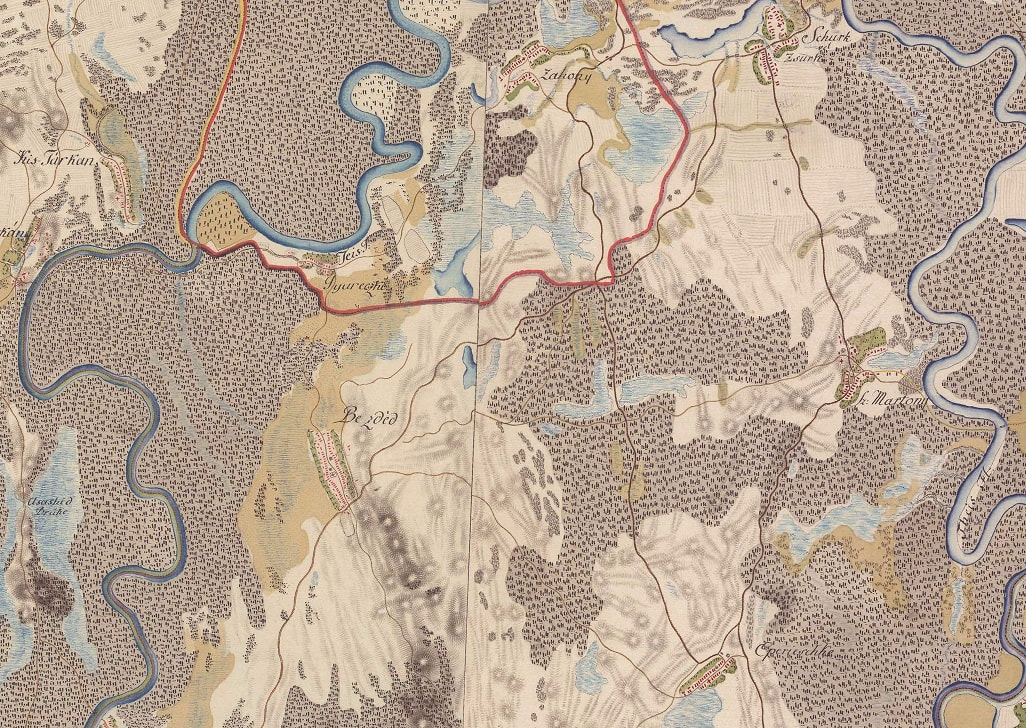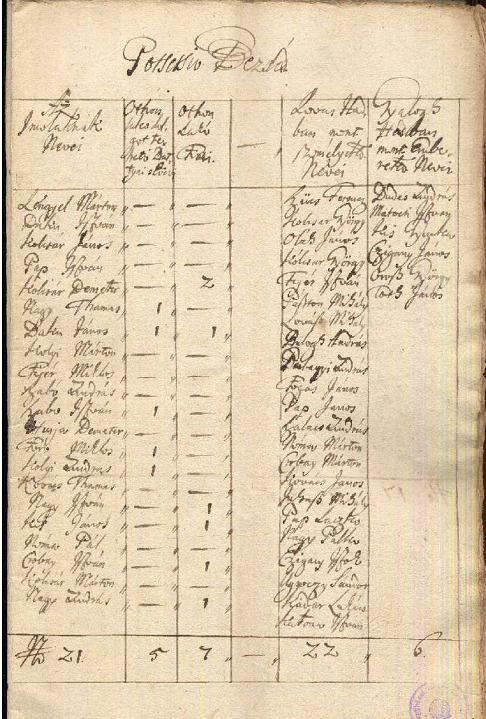|
I have two Daku great-great-grandfathers, Károly, born 1860, and András, born 1853, who both emigrated from Bezdéd, Hungary in 1902. These two men do not appear to have been closely related, although it's likely they would have been cousins of some degree. Thanks to the excellent record keeping of my Bekevar family, including my grandmother, I know when both men were born so I can confidently identify their baptismal records and see that their fathers were János and András, respectively. Going further than that is a little tricky since Hungarian naming patterns mean that families are all using similar given names for their children. I can make educated guesses about which records regard my ancestors and which regard their cousins but a lot more records are needed, if they exist. The above map is small portion of the First Military Survey of Hungary, completed between 1782 and 1785 by the Austrian Empire, which I found on Mapire. It shows several of the home villages of my Hungarian ancestors, including Bezdéd, Záhony, and Eperjeske. Interestingly, the fine detail of the map provides the layout of the towns and the surrounding terrain, including forest, wetlands, lakes, and rivers. Simply looking at baptismal records, there have been Dakus born in Bezdéd since at least 1758, around the start of church record keeping in the village. but how far back do the Dakus really go in this place? This is a 1704 record of men in the village, including Daku János and Daku István, suggesting Dakus have lived here for well over 300 years.
At this time, the Ottomans had surrendered Hungary to the Hapsburg Austrian Empire, which regarded it as newly conquered territory, not a liberated territory. In 1697, the Hungarians at Tokaj had rebelled unsuccessfully and in 1704, a small group of noblemen, led by Rákóczi Ferenc, stirred a peasant rebellion against Austria, which engulfed most of the region. After years of war that exhausted the peasantry, setbacks motivated those nobles to abandon Rákóczi and sign a treaty with the Habsburgs, which protected their interests, although doing little for the peasants who bore the brunt of the hardships. Other censuses of the area, such as a 1688 census of Tornyospálca, show other family names, including Szántó, the family name of my great-great-grandmother, Zsófia, but lack other, such as Fonagy, who may have moved to the village sometime early in the 19th century. However, it's pretty clear that my family lived in that area for centuries, though the best and, more often, worst of Hungarian history. Comments are closed.
|
Archives
2023 JAN FEB MAR APR MAY JUN JUL AUG SEP 2022 JAN FEB MAR APR MAY JUN JUL AUG SEP OCT NOV DEC 2021 JAN FEB MAR APR MAY JUN JUL AUG SEP OCT NOV DEC 2020 JAN FEB MAR APR MAY JUN JUL AUG SEP OCT NOV DEC 2019 JAN FEB MAR APR MAY JUN JUL AUG SEP OCT NOV DEC 2018 JAN FEB MAR APR MAY JUN JUL AUG SEP OCT NOV DEC 2017 JAN FEB MAR APR MAY JUN JUL AUG SEP OCT NOV DEC 2016 JAN FEB MAR APR MAY JUN JUL AUG SEP OCT NOV DEC 2015 JAN FEB MAR APR MAY JUN JUL AUG SEP OCT NOV DEC 2014 OCT NOV DEC Categories |


 RSS Feed
RSS Feed